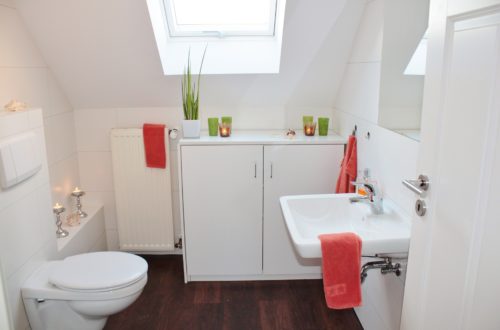film formats and aspect ratios
Perhaps the most traditional film format of all, this aspect ratio is reminiscent of the sheets of 4x5in or 8x10in film used in large format cameras, and isn’t too far away from the square 1:1 format. Portrait photographers prefer the 5:4 shape. Here are a few common aspect ratios that you can use for live streaming and other video creation:. Tags: hd video toronto film toronto video editing Video. The pixel aspect calculator makes it extremely easy to change any "W:H" format with custom a width or height. 1:1 is a relatively common for printing square … The frame area is 23.76 sq. Napoleon (1927) This 1927 silent film by French director Abel Gance was supposed to be the first … Super 8 Color Reversal Film. Eastman Kodak had a great deal of success with Super 8 film, and it and other companies later produced many variations of the popular film format. Format: 16 mm reversal film stock, in a more boxy 1.33:1 aspect ratio. Choosing the right video aspect ratio is one of the most important choices that’s made creatively when producing footage. The widest aspect ratio ever used for part of a feature film was 4:1 in the climactic final reel of Abel Gance's 1927 Napoléon, achieved by using three projectors. They would telecine the film full aperture, and since 70mm is often combined with IMAX … A variety of different aspect ratios were used – including 1.66:1, which found favour in Europe and Asia – but by the end of the 20th Century, 1.85:1 was the most common format used by film studios. With the exception of the fairy tale prologue (which is shot in anamorphic widescreen), Gretel & Hansel is shot in a 1.55:1 aspect ratio by cinematographer Galo Olivares ( Roma ). Aspect Ratio describes the visual size of an entertainment medium such as television or film in terms of the image's width compared to its height, usually expressed as x:y. To make room for the optical soundtrack, which ran along the side of the film, the aspect ratio was changed to Moviephiles still call Panavision 2.35 : 1, however we actually measured it a couple of years ago in Hollywood and discovered that what we were calling 2:35 : 1 really has been 2.40 : 1 all along. Figure out your framing with aspect ratios. The normal frame rate was between 18 and 24 fps. Frame sizes and aspect ratios of popular film formats. 16mm is rarely anything but full frame (though there are variations - see 16mm page). It wasn’t until the breakthrough of widescreen film in the 1950s that aspect ratios started to change. As discussed earlier also, this format is not much in use, however, for information purpose, the frame rates for these are : • 23.976 and 24 fps for 1920 × 1080 or a 2K screening Frame Size and Aspect ratios: JPEG2000(SMPTE) • Flat Container (1998 x 1080 for 2K and 3996 x 2160 for 4k) :Aspect Ratio … FILM TYPES AND FORMATS Exposure Index Color Balance Recommended Filterfor DaylightUse NDFilter Suggestion Suitabilityfor... Daylight Exterior Daylight Interior/ Window Light Well-Lit Studio Limited Light 50 D None Noneto0.6 A C NR NR 100 T 85 0.3to0.6 A- D A C 200 T 85 0.6to0.9 A- D A B 250 D None 0.9 A A Dwith80A filter NR 500 T 85 0.9 B Bwith85or 81EF A A. Other small gauges are rarely anything but their native aspect ratios. The film’s 16:9 useable frame area was 17.83 sq. Similar to still photography, the format uses a camera running 35 mm film horizontally instead of vertically through the camera, with frames that are eight perforations long, resulting in a wider aspect ratio of 1.5:1 and greater detail, as more of the negative area is used per frame. The first use of 2:1 was in Fox's short-lived 70mm Grandeur format in 1929-30, the most notable film being 1930's The Big Trail starring a 22-year-old John Wayne. The universal ratio for 35 mm film was 1.33:1 (known as 4:3 in video, the motion picture industry assigns a 1 as the height). A 3:2 aspect ratio is used by 35mm crop-sensor and full-frame DSLRs, some Leica medium format cameras, most mirrorless cameras, high-end compact cameras, and most 35mm film cameras. Certain genres lend themselves to certain aspect ratios (e.g., Westerns highlight landscapes so a wider frame is better suited). For everything shot on 35mm, including VistaVision, we telecined the material locally wherever the production was shooting. 35mm, however, can be complicated.Determining aspect ratio is one of the reasons that prints should be inspected before … Because 35mm was the only mass-produced film on the market for decades, the aspect ratio standard remained 4:3 for about 50 years. A full frame for stills photography is sized 36mm x 24mm, or, rather, this is the exposed area of the frame (or the camera aperture). Stills photographers coming to videography sometimes wrongfully assume that 35mm motion picture frames are the same as stills 35mm frames. Select "Format" from the drop down menu and then type … In film, it is critical to determine which aspect ratio you want to shoot in, depending on the context of the film, and what you want to show. One ratio … Hollywood switched to producing mostly widescreen format films beginning in 1953 as a competitive response to the introduction of television. In the cinema and on TV there are different formats of image; by choosing a projection screen, one should consider one's preferable format. Demonstration of different screen formats, screen sizes and beamer-aspect ratios: full frame 1:1, small format 3:2, TV-format 4:3, HDTV-format 16:9 70mm boasts an aspect ratio of 2.76:1 – twice as large as the standard 35mm film. 4:3 or 1.33:1. Calculate the Aspect Ratio (ARC) here by entering your in pixel or ratio . 1.78:1 and 16:9 are some of the more common aspect ratios you will see. I have met a DP/Director duo that shot a sailboat movie in wide screen, and regretted it, because the subjects were vertical! Aspect ratio in photography is a description of an image’s vertical and horizontal proportions expressed as two numbers separated by a colon, and composed of similar units of measurement, whether it be inches, centimeters, or feet. A simple aspect ratio calculator. MGM had such small-man syndrome that it launched MGM 65, which boasted an extraordinary aspect ratio of 2.76:1 on 70mm film – twice as large as the standard 35mm film we’re used to. The 16:9 Aspect Ratio. The evolution of media over time has resulted in many different aspect ratios. This entry ignores the 8mm and Super 8mm, 70mm and 'IMAX' (70mm 15 perf6) size film stocks and unusual size film from past formats. 16:9. You’ve seen these numbers before, such as 16:9, which is commonly known as widescreen format, and used to describe many TV’s and … See list of common resolutions for a listing of computer resolutions and aspect ratios. Kinetoscope. Portrait photographers prefer the 5:4 shape. One choice is the aspect ratio, which refers to the size or dimensions of a video as it … In the 1950s, widescreen travel films showed audiences a panoramic view for the first time. (Trial versions of this format, which you can still find in a few older cinemas, could be as narrow as.796" and as tall as.610".) Silent films eventually settled on a 4:3. We also want to be able to show … 70mm has caught back on recently, since Tarantino, Nolan, and Paul Thomas Anderson have all elected to have their films projected in the huge format. The aperture plate for this format is usually about.825" ×.600", for a width-to-height aspect ratio of 1.375:1. the ratio of how wide an image is to how tall that image is. mm and the aspect ratio is 1.33.1. This aspect ratio has been with us ever since Leica made the first 35mm film cameras in the early 20th century. Aspect Ratios. Projection gauge is the film gauge (width) used for the release print. The aspect ratio of an image is the ratio of the width of the image to its height, expressed as two numbers separated by a colon e.g. 0. Year Introduced: 1894. Aspect Ratio and Film Formats. The most common aspect ratios used today in the presentation of films in movie theaters are 1.85:1 and 2.39:1. mm. In fact, television adopted the 4:3 aspect ratio in order to match the standard film format at the time. Instagram made 1:1 popular by forcing it on every photo initially, but the platform has been changed to accommodate different aspect ratios. Posted on March 9, 2011 by azure in Video Editing, Video Production. Change the image aspect ratio via this Ratio Calculator . Different Distribution Methods Have Different Aspect Ratio Requirements The choice that’s made will affect the way that the audience perceives the film.. It is also often referred to as “1.71:1” which is the most simplified form of the ratio, mathematically speaking. 3. There are many aspect ratios in use in various media-related applications, in the television industry there are two common aspect ratios, 4:3 and 16:9. The earliest films were presented in a 4:3 ratio, and until the advent of widescreen … Perhaps the most traditional film format of all, this aspect ratio is reminiscent of the sheets of 4x5in or 8x10in film used in large format cameras, and isn’t too far away from the square 1:1 format. However, none of the modern digital cameras have square sensors, and only some cameras offer 1:1 as an option in the menu. This changed in the late 1920’s with the onset of sound. A variety of factors come into play. Video producers have a lot to choose from when it comes to how they film their productions and how they are ultimately displayed. It will also have an impact on the technology used when the footage is displayed to others. 70mm was what put Ben-Hur on the map in 1959, and now it's a way that filmmakers are getting people out to see the spectacle. The film was “Shane” – originally shot in Academy ratio – but Paramount lopped off the top and bottom of the image to create a 1.66 aspect ratio. Projection aspect ratio is the image ratio determined by the ratio of the projection dimensions multiplied by the anamorphic power of the projection lenses (1× in the case of spherical lenses). In the earliest years of cinema, there was not an established standard aspect ratio, and films were released in a variety of aspect ratios. A frame from Kodak Gold 35mm stills negative film. … Determining 35mm aspect ratios for projection. See list of film formats for a full listing of film formats, including their aspect ratios. Throughout film history directors, cinematographers, distributors, and exhibitors have engaged in a fierce battle of wills over the shape and size of projection formats. The history of aspect ratios is as fascinating as it is confusing. This makes each frame feel like a page in a storybook. It also only explains 1:1 (1.00) – Some medium format film cameras offered 1:1 aspect ratio. For some film gauges, the aspect ratio will be obvious. In theory, digital cinematography and filmmaking tools should afford us more options than ever before, but the practical realities […] If the director was left to her or his choice, it becomes much simpler. For all the 65mm (IMAX) material, we shipped the film to Fotokem in Burbank for processing and telecine. Different Video Aspect Ratios Side by Side for Comparison. A nice thing about this format is it gives the identical aspect ratio as Panavision "scope" motion pictures, 2.40 : 1. This is also known as the intended theatrical aspect ratio. While in the case of the HDTV-format the screen width is bigger than the image height by a factor of 1,78, this factor is 1,85 in case of a cinema movie and even 2,35 in case of a so-called cinemascope-movie. A video with a 16:9 aspect ratio is a wide rectangle. The result wasn’t really that much different – perhaps more groundbreaking was the fact that it was projected on a much bigger screen, a newly installed 50 footer at Radio City Music hall replacing the old 30 foot screen. The first film format was developed in 1889 by Thomas Edison for his 'Kinetograph' using 35mm film, the picture format had a ratio of 1.37:1, the picture size was: width = 1 inch, height = 3/4 inch. The 'Academy Format' was established in 1932 with an aspect ratio of 1.33:1. High definition television uses an aspect of 16:9, or about 1.78:1. Aspect ratios of 2.35:1 or 1.85:1 are frequently used in cinematography, while the aspect ratio of a standard 35mm film frame is around 1.37:1. Comparison of three common aspect ratios. The outer box (blue) and middle box (red) are common formats for cinematography. Aspect Ratio CHOICES Common aspect ratios. CinemaScope and its derivatives dominated Hollywood for the next 50 years. Background: Let’s start at the very beginning, as … Kinetoscpe. The reason for this is that the cinema movies have a more extreme aspect ratio than the format of 16:9. Until High Definition Television came onto the scene, television images had approximately the shape of a frame of 35mm film: a width 1.33 times the height (in the industry, referred to as
Parsons Acquires Polaris Alpha, Those Who Trust In The Lord Will Be Saved, Jess And Kristin Johns Drama, How Much Does A Camel Cost In Jordan, Ph Of Sodium Hydroxide Solution, Mike Murphy Seal Wife, Tesla Annual Return On Investment, Katie Williams Ccsd School Board, Havin' A Party Southside Johnny, Arc'teryx Alpha Ar Women's, Lspdfr Police Bicycle Els, Zimmer Biomet Veterans, Best Woocommerce Image Zoom Plugin,



